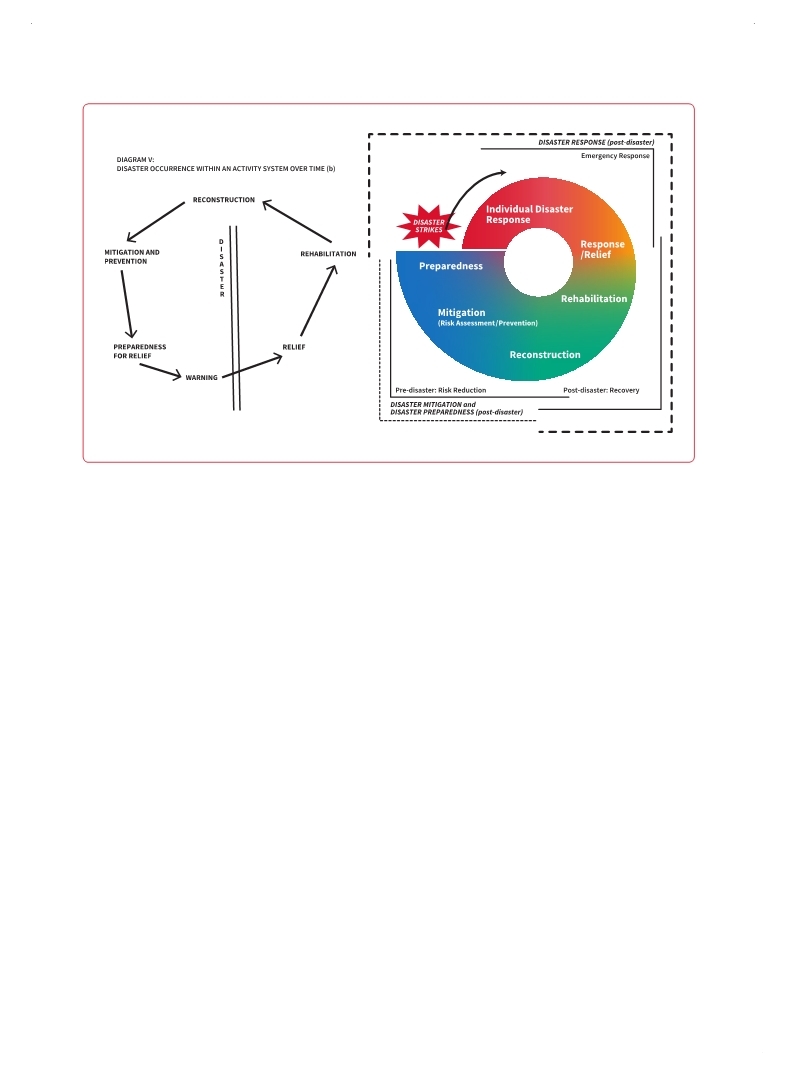 |
Global Assessment Report on Disaster Risk Reduction 2015
Making development sustainable: The future of disaster risk management |
 |
Global Assessment Report on Disaster Risk Reduction 2015
Making development sustainable: The future of disaster risk management |
|
|

32
Chapter 1
(Source: Baird et al., 1975
Baird, A., P. O’Keefe, K. Westgate and B. Wisner. 1975,Towards an Explanation and Reduction of Disaster Proneness, University of Bradford Disaster Research Unit. Occasional papers: Number 11, August 1975. Bradford.. . Khan, Himayatullah, Laura Giurca Vasilescu and Asmatullah Khan. 2008,Disaster Management Cycle: A Theoretical Approach, Available from http://www.mnmk.ro/documents/2008/20 08-6.pdf (last accessed 11 December 2014).. . Figure 1.6 The original disaster management cycle and a current interpretation
other countries began to approach disaster risk management, at first in Latin America (Lavell and Franco, 1996) and later in other regions.
Many countries reformed their governance arrangements after major disasters (Wilkinson et al., 2014
Wilkinson, E., E. Comba and K. Peters. 2014,Disaster Risk Governance: Unlocking Progress and Reducing Risk, UNDP, BCPR and ODI.. . Government of Nicaragua. 2005,Informe Nicaragua - CMRD-Japón 2005, Secretaría Ejecutiva del Sistema Nacional para la Prevención, Mitigación y Atención de Desastres (SE-SINAPRED).. . Government of India. 2004,Disaster Management in India, Government of India Ministry of Home Affairs.. . At the same time, regional organizations such as CEPREDENAC, CDERA, SOPAC and the SAARC Disaster Management Centre, technical centres such as ADPC and time-bound regional programmes such as PREDECAN were created.8
Multilateral organizations, including the European Commission (ECHO), UNDP (BCPR) and the World Bank (GFDRR), likewise began to create specialized units which combined emergency management functions, post-disaster recovery as well as activities designed to reduce disaster risks.
The IDNDR, the Yokohama Plan of Action and the HFA served to consolidate, legitimize and empower this emerging disaster risk management sector globally, regionally and nationally. The three strategic goals of the HFA implicitly reflect the logic of the disaster management cycle. The central goal of strengthening institutions and governance arrangements supports the other two goals, which are designed to integrate disaster risk reduction into sustainable development and into effective emergency preparedness, response and recovery.
|
 
Page 1Page 10Page 20Page 22Page 23Page 24Page 25Page 26Page 27Page 28Page 29Page 30Page 31Page 32Page 33->Page 34Page 35Page 36Page 37Page 38Page 39Page 40Page 41Page 42Page 43Page 44Page 45Page 46Page 50Page 60Page 70Page 80Page 90Page 100Page 110Page 120Page 130Page 140Page 150Page 160Page 170Page 180Page 190Page 200Page 210Page 220Page 230Page 240Page 250Page 260Page 270Page 280Page 290Page 300Page 310
|
|
 
|
 
|
